Forex figure is a rectangle.
Proper use of graphical analysis figures is a big plus in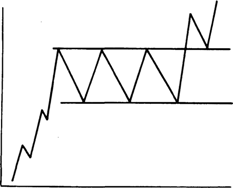 a trader’s working tools pocket.
a trader’s working tools pocket.
Surely you have heard that graphical analysis is based on the patterns of behavior of the crowd, which, although becoming smarter from year to year, its basic instincts and thirst for profit do not change.
Therefore, when using graphical analysis figures, you always rely on crowd analysis, and if you understand where the market can move the majority of players, you will always remain in the black despite intermediate losing trades.
The Rectangle figure is considered a classic trend continuation figure in Forex. Every trader is tormented by doubts whether it is worth closing a position, since the trend may end or, on the contrary, a new order will be added due to the continuation of the current trend.
In fact, having knowledge about the possible continuation of a trend and its further direction will always help save your pocket, and not only save it, but increase it.
The rectangle figure is ninety percent similar to the trend continuation figure called the Flag, by the way, which you also need to learn about in the article “ Trend Continuation Figures ”.
It is formed after a strong price movement occurred, after which the price chart began to move in a horizontal position, or, more simply, sideways. Next, two horizontal lines of support and resistance for this pullback. The lines must be parallel to each other, which is why the figure itself is called a rectangle. You can see an example of a rectangle shape in the picture below:
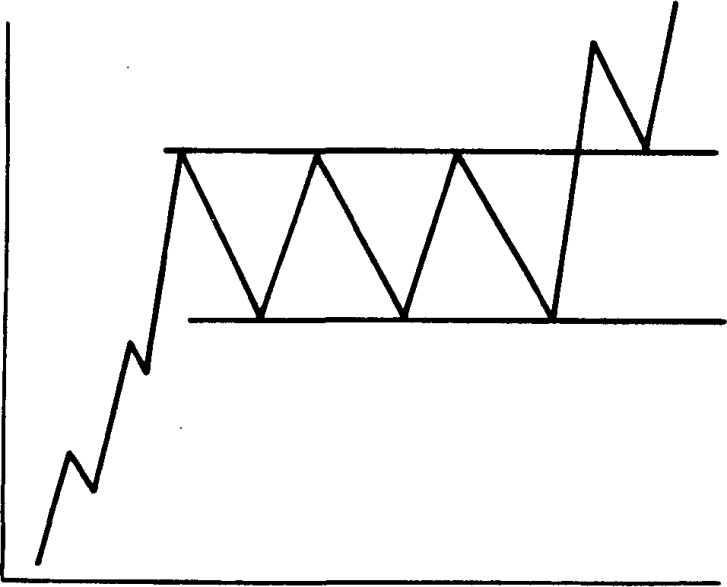 There are different approaches to how to trade this pattern, but we will start with the classics and a couple of modifications.
There are different approaches to how to trade this pattern, but we will start with the classics and a couple of modifications.
The classic version states that this figure is a continuation of the trend, so if a rectangle has formed in front of you in a bullish trend, the signal to enter a buy position is the breaking of the upper level of the resistance line. The stop order is placed at the nearest local minimum, or as is often the case at the support line of the rectangle.
A possible goal is calculated in a unique way, namely, the point in history is located where the previous movement ended and the current one began. Next, measure the distance in points from this point to the upper border of the rectangle.
As a result, this distance in points is our profit. Many people are tormented by the question of how to find the point of change of direction? Very simply, draw a trend line along the past price movement, and the point of its breakdown is the starting point for profit. Perhaps the writing is a little unclear, so I recommend that you familiarize yourself with the example in the picture below:
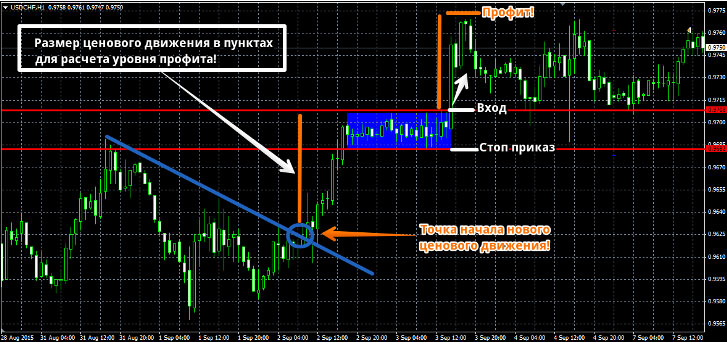 The rectangle also appears in a bearish trend, so if this figure has formed in front of you, then the signal to enter a sell position is the breaking of the lower resistance line of the rectangle.
The rectangle also appears in a bearish trend, so if this figure has formed in front of you, then the signal to enter a sell position is the breaking of the lower resistance line of the rectangle.
A stop order is placed near the support level or the nearest price maximum. The profit is set in the amount that was described in the conditions for the purchase. An example of an entry can be seen in the picture below:
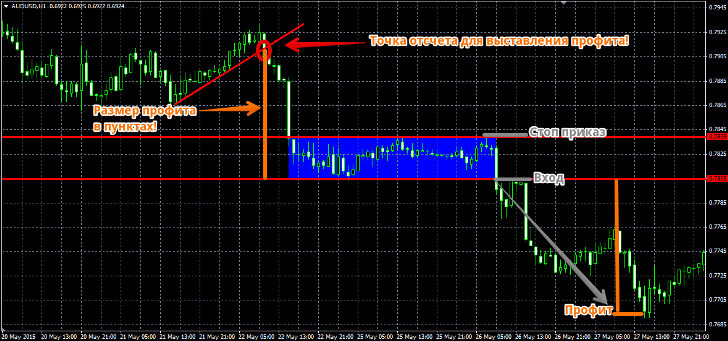 And now I’ll actually introduce you to some modifications that deviate from the classical approach.
And now I’ll actually introduce you to some modifications that deviate from the classical approach.
The first and most common is to enter a position not on a breakout of the level, but by placing a pending order at the high of the candle that has broken through the rectangle level itself in the direction of the trend. The stop order is placed just below the low of the candle (for a bear market high). The profit is placed twice as much as the stop order. To make the essence of the modification clearer to you, I recommend looking at the example in the picture below:
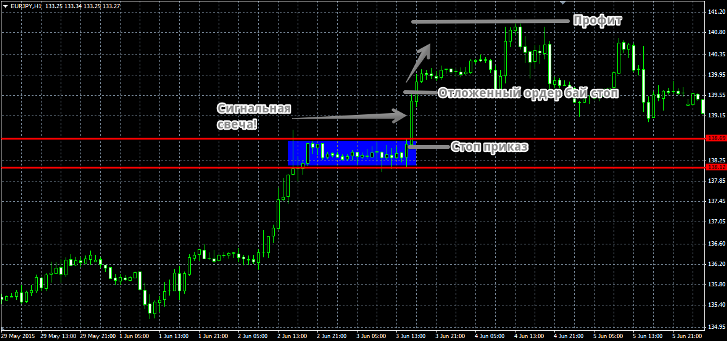 The advantage of this approach is that you protect yourself from a false breakout of the rectangle, but the price for such protection is the loss of the lion's share of profit.
The advantage of this approach is that you protect yourself from a false breakout of the rectangle, but the price for such protection is the loss of the lion's share of profit.
There is also a more radical approach to this figure, when it begins to be transferred from a series of trend continuation figures to reversal ones. So, many traders, seeing a rectangle figure, claim that this is a moment of accumulation of forces, so which of the boundaries of the square the price will break in that direction and enter.
To do this, a buy stop order is placed at the top level of the figure, and a sell stop order at the bottom level. The stop order is placed with the size of the width of the rectangle, and the profit order is set with the size of the width of three of the same rectangles. When one of the pending orders is triggered, the opposite one is deleted. Example in the picture below:
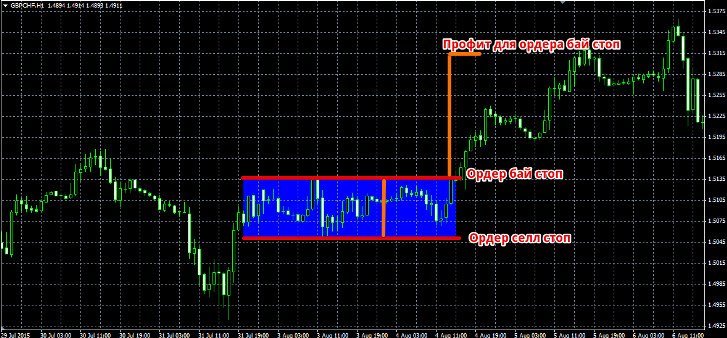 The advantage of this approach to using the rectangle pattern is that the trader captures the movement in whatever direction it goes.
The advantage of this approach to using the rectangle pattern is that the trader captures the movement in whatever direction it goes.
However, if we talk about the minus, then using this approach you break the general approach to this figure, which, as a rule, is a banner of trend continuation and not the other way around. Therefore, the price can disrupt your counter trend pending order and return to the rectangle back as if by the book.
In conclusion, I want to say that all three methods of using the square figure have a right to exist, but, as a rule, the classical approach often works itself out, and the risk-to-profit ratio in the first option is a clear advantage over the other two.


